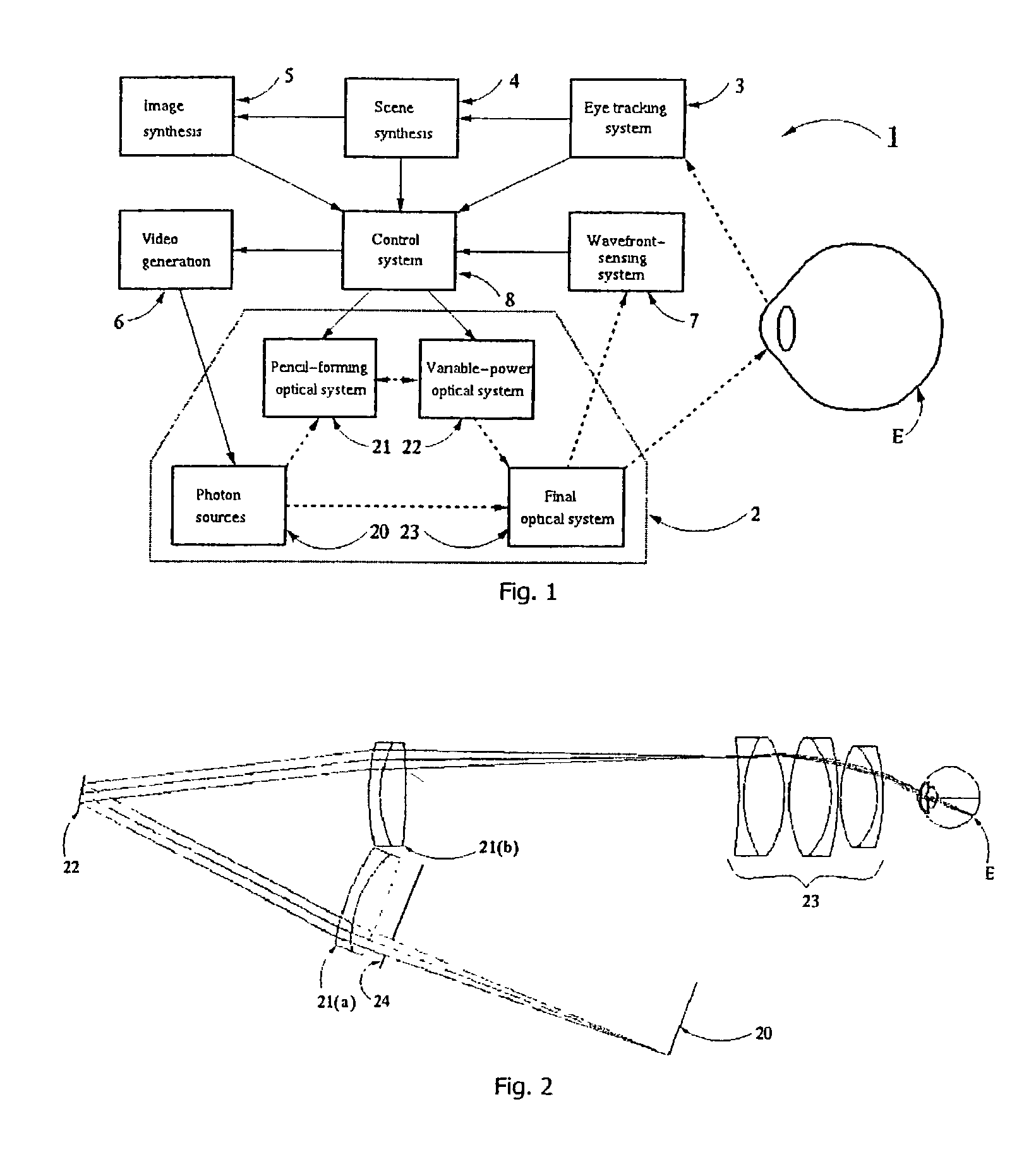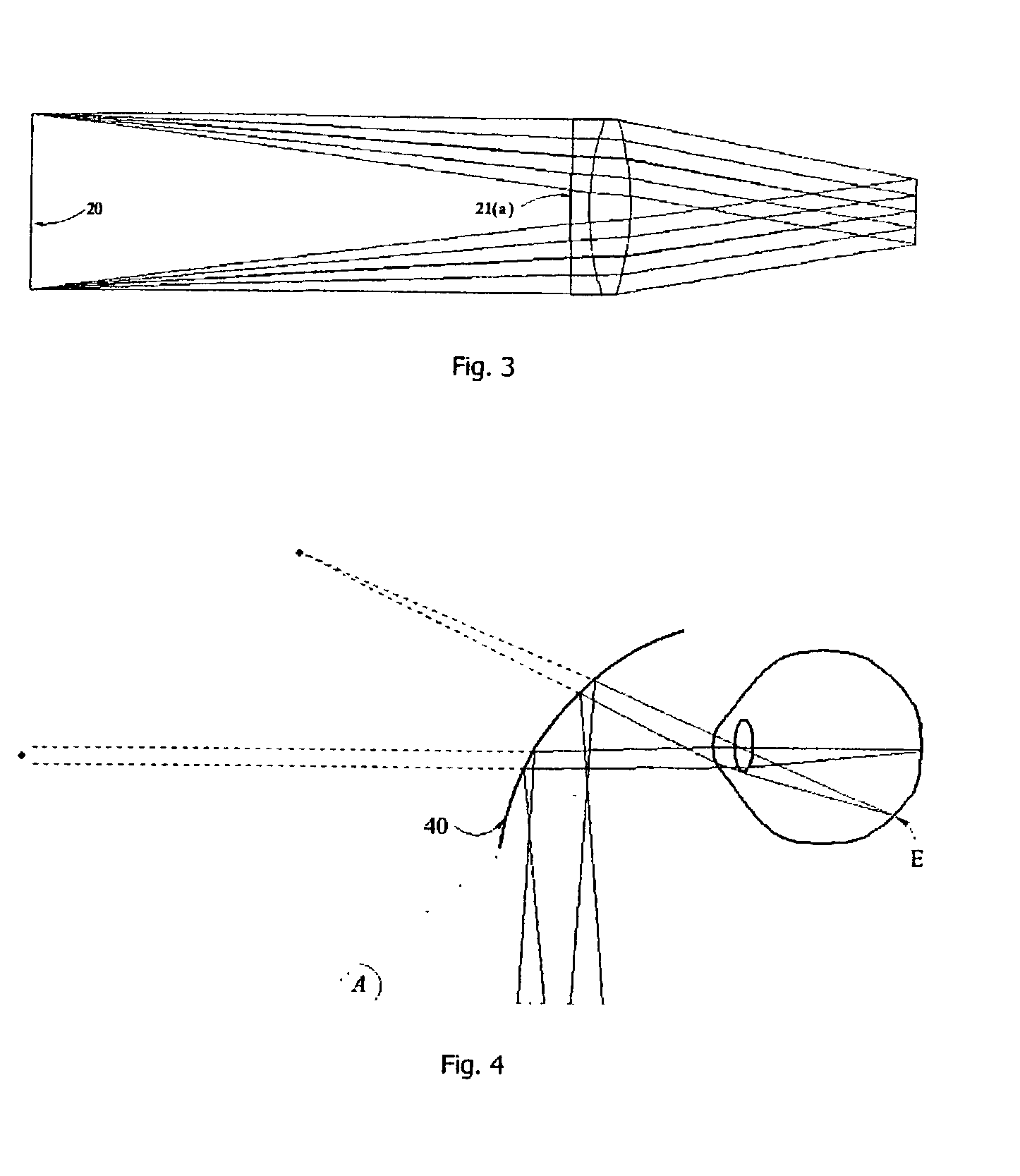Display device
a display device and display technology, applied in the field of display devices, can solve the problems of large volume, unreliability, and large mechanism to translate or rotate optical elements at such frequencies by non-trivial amplitudes, and achieve the effects of slow switching speed, large cost, and unreliability
- Summary
- Abstract
- Description
- Claims
- Application Information
AI Technical Summary
Benefits of technology
Problems solved by technology
Method used
Image
Examples
Embodiment Construction
[0036] Referring to FIG. 1 a display device 1 comprises the following data processing components and an optical system 2:
[0037] an eye tracking system 3,
[0038] a scene synthesis system 4,
[0039] an image synthesis system 5,
[0040] a video generation system 6, and
[0041] a wavefront sensing system 7.
[0042] These interface with a control system 8, which in turn interfaces with components of the optical system 2 comprising:
[0043] a photon source 20, having multiple pixels in a 2D surface,
[0044] an intermediate optical system, in this embodiment a pencil-forming system 21 which forms the photons into pencils, each pencil having photons from a single pixel, and
[0045] a variable power optical system 22 towards which pencils converge, and
[0046] a final optical system 23 for directing photons into a user's eye E for viewing the source image.
[0047] The photon source 20 comprises a conventional cathode-ray tube. The pixels emit photons in near-spherical wavefronts when excited by an electron bea...
PUM
 Login to View More
Login to View More Abstract
Description
Claims
Application Information
 Login to View More
Login to View More - R&D
- Intellectual Property
- Life Sciences
- Materials
- Tech Scout
- Unparalleled Data Quality
- Higher Quality Content
- 60% Fewer Hallucinations
Browse by: Latest US Patents, China's latest patents, Technical Efficacy Thesaurus, Application Domain, Technology Topic, Popular Technical Reports.
© 2025 PatSnap. All rights reserved.Legal|Privacy policy|Modern Slavery Act Transparency Statement|Sitemap|About US| Contact US: help@patsnap.com



